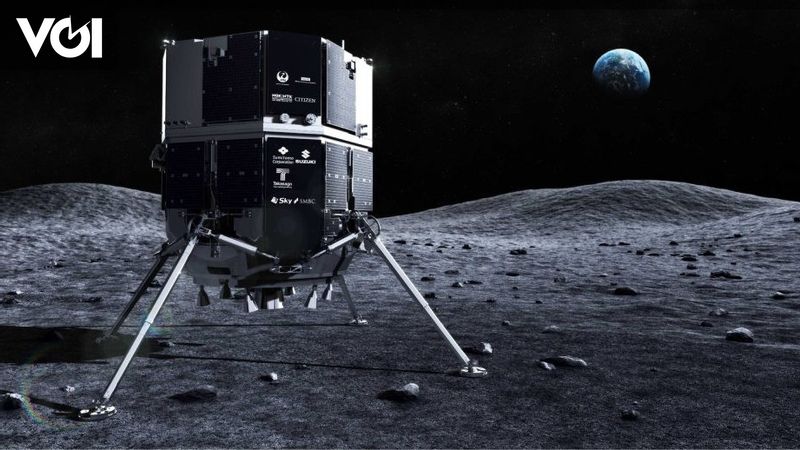JAKARTA – The Japanese company ispace finally knows the cause of the failed landing on the Hakuto-R Mission 1 (M1) Lunar Lander, which recently crashed into the crater surface of the Moon.
Hakuto-R M1 was launched on December 11, 2022, from Cape Canaveral Space Force Station in Florida, United States (US), aboard a SpaceX Falcon 9 rocket, marking the Japanese company’s maiden mission.
Operations specialists at the ispace Mission Control Center in Nihonbashi, Tokyo, managed to pinpoint the reason behind the crash, in which the Hakuto-R M1 miscalculated its distance to the surface.
On April 26, 2023, at 00:40 Japanese Standard Time, the lander began its descent sequence from an altitude of about 100 km above the lunar surface. At the end of the planned landing sequence, it approached the lunar surface at less than 1 m/s.
The operation was confirmed to go ahead as expected until approximately 01:43, which was the scheduled landing time. During the descent period, unexpected behavior occurred with the Hakuto-R M1 altitude measurement.
The lander estimates that it is at zero altitude, or already on the lunar surface, but finds it is still at an altitude of about 5 km above the lunar surface.
After reaching the scheduled landing time, the Hakuto-R M1 continued to descend at low speed until the propulsion system ran out of fuel. At that time, the landing was still controlled from the stationary lander, but then it free-falled onto the lunar surface.
The reason, is likely because the software is not working as expected. According to a review of flight data, as the Hakuto-R M1 was navigating to its planned landing site, the altitude measured by the onboard sensors increased markedly when it passed a large cliff about 3 km high on the lunar surface, which was determined to be the crater rim.
“Now, we have been able to identify problems during landing and have a very clear picture of how to improve our future missions,” said ispace Founder and CEO, Takeshi Hakamada in his official statement, quoted Monday, May 29.
“While it is regrettable that we were not able to fully meet the expectations of all our stakeholders, including our customers, all of us at ispace are proud of what we have accomplished in Mission 1 and are very positive about what we were able to achieve,” he added.
Furthermore, the onboard software mistakenly causes this discrepancy to be an abnormal value reported by the sensor, and after that the sensor’s measured altitude data is intercepted.
One of the main contributing factors to these design issues was the decision to modify the landing site after a critical design review was completed in February 2021. The modifications impacted verification and validation plans even though many landing simulations were conducted prior to landing.
Seeing this incident, ispace then considered modifications in its overall analysis regarding the successful completion of the mission.
All of that information will be fed into the software design, as well as the upgrade and expansion of the landing sequence preparation simulation scope for the company’s future missions, including Mission 2 and Mission 3, to improve landing sequence accuracy.
“We have started working on Mission 2 and Mission 3. We are ready to face challenges and make every effort to be better. We will ensure that the valuable knowledge gained from Mission 1 will lead us to the next stage of evolution,” said Hakamada.
Further missions are under development with launches expected in 2024 and 2025. ispace has also unveiled a lunar data business concept to support new customers as a gateway for doing business on the Moon.
Tags: japan space moon
2023-05-29 14:24:00
#HakutoR #lander #Japan #fell #moon

:watermark(https://f.pmo.ee//logos/4132/d583334e07b643b158b745b655f05032.png,-2p,-2p,0,18,none)/nginx/o/2023/05/29/15355955t1h1e07.jpg)
